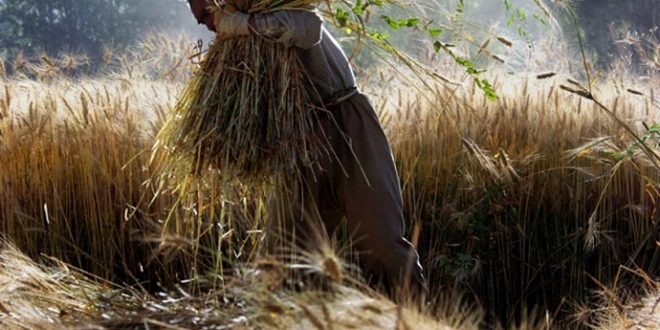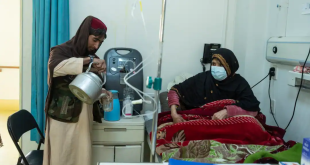By Seddiq Hussainy
China’s agricultural development in past few decades has not been but a miracle. Modernization of farming has been a pillar of China’s poverty reduction strategy.
With roughly 40 percent of its population living in rural areas and almost 200 million farmers, China used this sedentary rustic human capital to the maximum and set the pillars of modern agriculture. This protectionist socialist approach to agriculture brought about remarkable results; poverty reduction, optimum agricultural outputs and improved rural life. A farmer’s annual revenue increased from 130 yuan in 1980 to 14,000 yuan in 2018.
The government is vigorously incentivizing all various kinds of agriculture, horticulture and animal husbandry. A senior official in the Ministry of Agriculture and Rural Affairs told Afghanistan Times that China has attached great importance to supporting farmers through all means.
Zhao Changbao said that China envisages to build 170,000 hectares of farmlands in 2030. This is as it has already built hundreds of thousands of hectares of modern farmlands all over the country.
Changbao reckoned that incentives and agriculture subsidiary had a massive role to play in bolstering agriculture.
“We follow the policy of subsidization and incentivization to encourage farmers. Supporting farmers is tantamount to supporting agriculture. We support farmers by providing agriculture technology, machinery, fertilizers and other necessities.
This is exactly what Afghanistan lacks; a nonexistent policy of incentivization and modernization of agriculture, derelict and barren lands, no market for domestic agricultural products and an utter chagrin for the farming population.
Agriculture is an important determinant of economic growth. Afghanistan desperately needs to draw lessons from China in terms of policymaking, budget-allocating, farming modernization and techniques, agricultural administration and incentivization.
As there factors have helped in narrowing the income gap between the urban and rural population in China, development of agriculture will also help Afghanistan improve the lives of millions of desperate farmers and improve its economic status.
The bare minimum the Afghan government can do is to explore more international markets to promote and sell domestic products. There is a huge potential to export dried fruits to China.
Another official in the ministry said that China exports 19.7 billion yuan of agriculture products only to Asia.
Ma Hongtao, Deputy Director of International Cooperation said at a press conference that China’s agriculture trade volume with Asia was 31.6 billion yuan in 2018. China exports fruits, cotton and fertilizers to the Asian nations.
A relatively small city, Yan’an, in Shaanxi province witnessed a total output of more than 24 billion yuan in 2018.
The per capita disposable income of rural residents in Yan’an reached almost 11,000 yuan.
China’s marketing policy is so robust that ensures a constant stability of sales for agricultural outputs. In Yan’an alone, there are over 1890 e-commerce enterprises and more than 25,000 online stores and micro stores, guaranteeing a smooth flow of agricultural trade within and outside the province.
China’s feat is not merely confined to agriculture. Forestry, fishery and animal husbandry have seen exponential growth as well and have resulted in high economic benefits both for the farmer community and the government.
Afghanistan can learn from China’s policy stability. Leadership capacity, accountability and competence and quality assurance are other recipes for bolstering agriculture sector in Afghanistan.
Another major predicament is that farmers are engaging in subsistence farming for self-reliance. What the country needs is to switch gears from mediocre low-scale farming to mass-scale agriculture where lands are utilizes to the maximum extent for optimum outputs. The government can also adopt the cooperative modality to ensure value chain and unite the farming communities. Subsidies and incentives should also be initiated and regulated in large scale. This is simply a paradigm China has been pursuing over past decades.
Organic farming is more charming. The government should give subsidy to farmers to support investment in agriculture.
Because of the derelict agriculture mechanism and primitive farming techniques, there is a dire need for mechanization of agriculture. The government can allocate more budgets to supply machinery and technology to farmers to encourage mass-scale production.
The central government can have the private sector shoulder some of this burden by involving private enterprises in investing in farmlands and mechanization of farmlands. Public private partnership will make agriculture enterprises more profitable and serve as a solution to budget scarcity.
This could also be a remedy to the hassle of marketing. This allows farmers to partner with private entrepreneurships to sell their products.
If agriculture is sustainable, it ensures a continuous flow of revenue for millions.
Poor rural infrastructure and lack of cool storage facilities are among other deterrents bedeviling farmers all over Afghanistan. Farmers continue to incur losses on account of having no storage facilities to keep their products. This calls for need-based enhancement of refrigeration capacity. Decay of fruits and agriculture products is still a major problem which has been daunting millions of farmers countrywide forcing then to seek inexpedient alternatives. Many end up selling their products at highly low prices. Cold chain logistics should be provided and facilities should be erected to facilitate optimum storage of fruits and vegetables and ultimately a reliable and stable market.
Training could be construed as important as finding markets for agricultural products. Efforts should be made to enhance the capabilities and capacities of farmers. Afghan farmers have experience in traditional and ancient farming which was not as productive and efficient as modern agriculture has become. Farmers need to be trained in new farming techniques and methods.
 Afghanistan Times
Afghanistan Times




